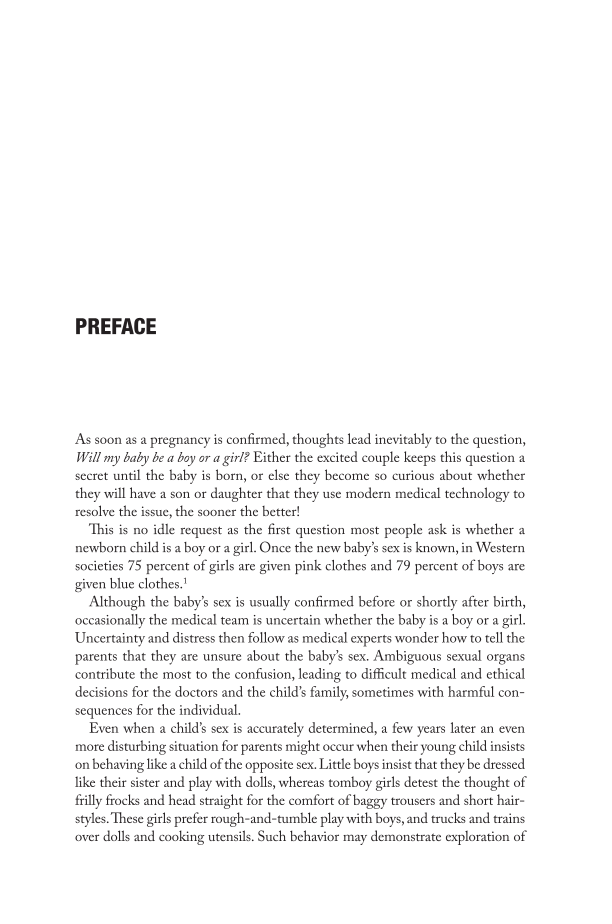As soon as a pregnancy is confirmed, thoughts lead inevitably to the question, Will my baby be a boy or a girl? Either the excited couple keeps this question a secret until the baby is born, or else they become so curious about whether they will have a son or daughter that they use modern medical technology to resolve the issue, the sooner the better! This is no idle request as the first question most people ask is whether a newborn child is a boy or a girl. Once the new baby’s sex is known, in Western societies 75 percent of girls are given pink clothes and 79 percent of boys are given blue clothes.1 Although the baby’s sex is usually confirmed before or shortly after birth, occasionally the medical team is uncertain whether the baby is a boy or a girl. Uncertainty and distress then follow as medical experts wonder how to tell the parents that they are unsure about the baby’s sex. Ambiguous sexual organs contribute the most to the confusion, leading to difficult medical and ethical decisions for the doctors and the child’s family, sometimes with harmful con- sequences for the individual. Even when a child’s sex is accurately determined, a few years later an even more disturbing situation for parents might occur when their young child insists on behaving like a child of the opposite sex. Little boys insist that they be dressed like their sister and play with dolls, whereas tomboy girls detest the thought of frilly frocks and head straight for the comfort of baggy trousers and short hair- styles. These girls prefer rough-and-tumble play with boys, and trucks and trains over dolls and cooking utensils. Such behavior may demonstrate exploration of PREFACE
Document Details My Account Print multiple pages
Print
You have printed 0 times in the last 24 hours.
Your print count will reset on at .
You may print 0 more time(s) before then.
You may print a maximum of 0 pages at a time.
































































































































































































































































































